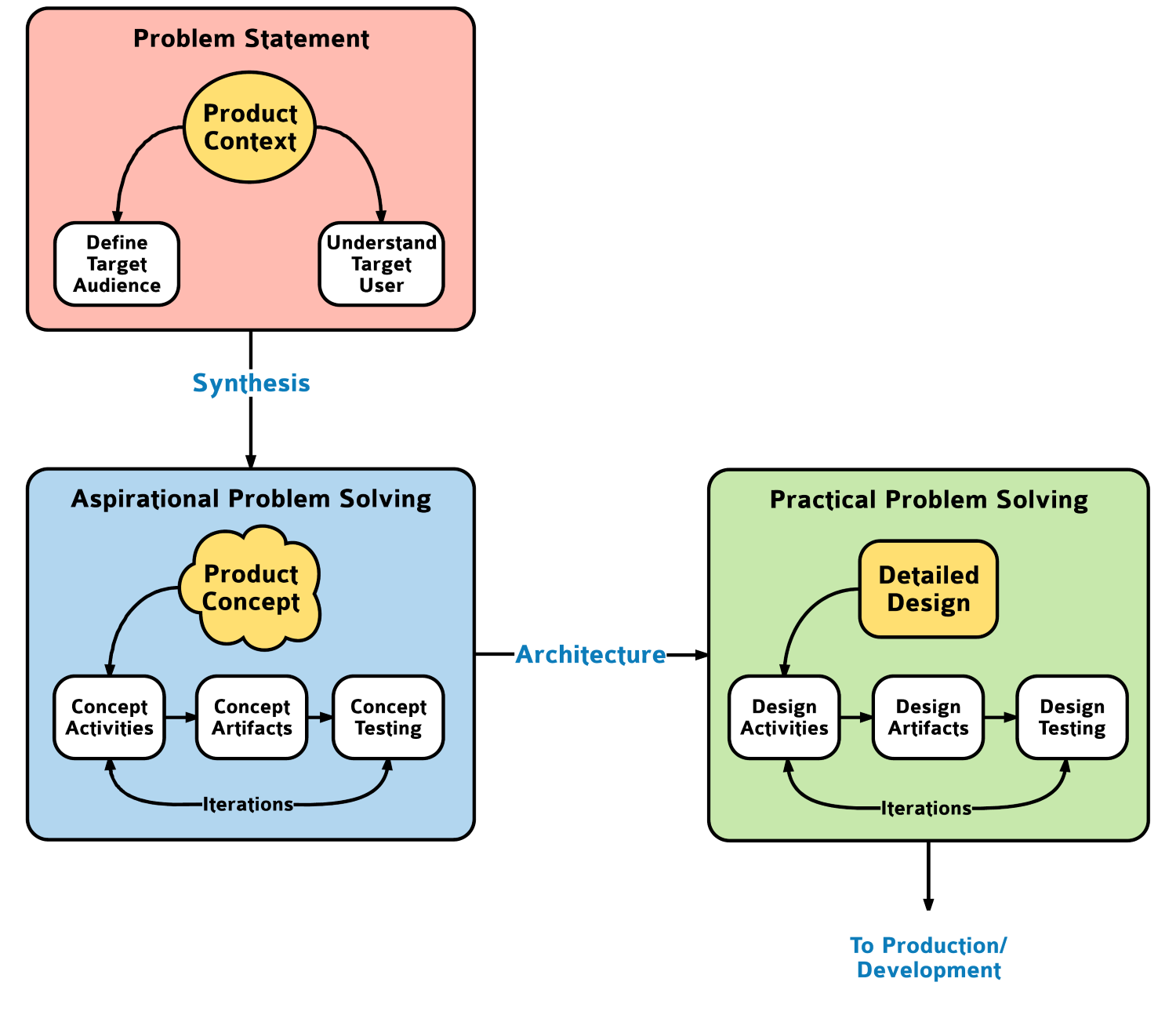Concept development
Concept development is a formal part of the Experience Design process. The purpose of this phase is to help the designer synthesize all the information gathered in previous phases of the project--through activities that are mostly formal and analytical--and define the design approach and solution that address the product objectives and needs in unique and engaging ways.

One way to think about concept development is as an advanced form of problem solving, as illustrated in the preceding figure:
- Define a problem statement: The early phases of the product design process are focused on discovery and research activities--Company X wants to create a unique experience for its product Y, which will focus on target audience Z, and others. What should this experience be like?
- Aspirational problem solving: To answer this question, the designer needs to switch to a different mode of thinking--from research and analysis to synthesis guided by design-thinking and experimentation. Concepts...











































































